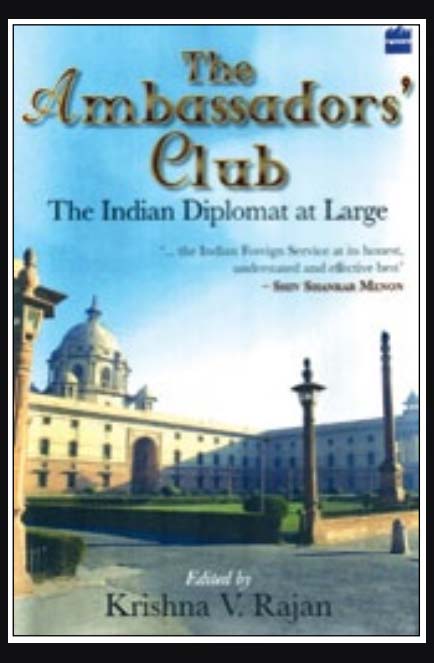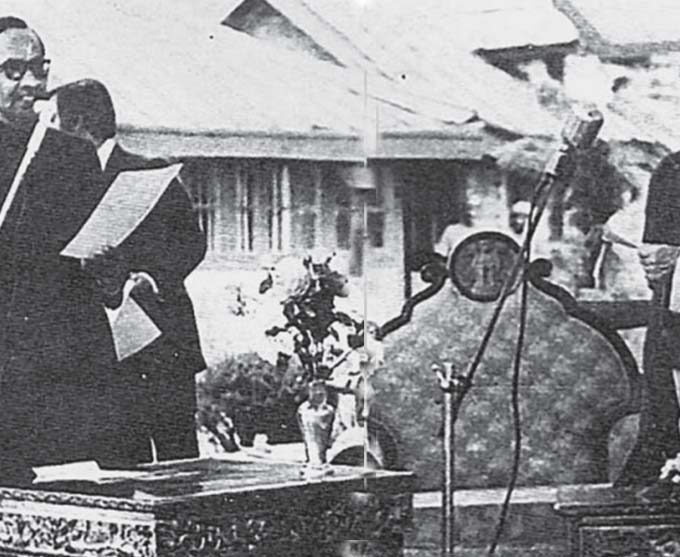SUMMIT meetings have become a standard feature of international diplomacy in the twenty-first century. Leaders meet each other with a frequency which is no longer unprecedented. Thanks to modern technology, the meetings can even be virtual, as exemplified by the hour-long exchange between Presidents Hu Jintao of China and Barack Obama of the US while the latter was travelling in his airplane during the Easter break of 2010. Did they only speak on this occasion, or also see each other as they conversed, is a detail as yet unrevealed. But it points to future possibilities.
Frequency may dull their impact. Nevertheless the importance of summit meets in the conduct of would affairs remains unquestionable. They are the highest level for decision making on matters of importance, and also for enabling the decision makers to know and size up each other for the future. Apart from providing opportunities for such personal interaction, they are important for image building and moulding public opinion. They also have great symbolic value. But all these possibilities presume careful and often protracted preparation in advance of such meetings.
Sherpa is a word which accompanied the word summit into the language of diplomacy. It refers to the lower level workers who prepare a mountain path to the top for their masters. Rare indeed are summits not preceded by such sherpas engaging in hard-nosed negotiation on all their aspects: policy and protocol, issues and images, final options and fall back positions. The eventual result may often even depend on such preliminary efforts.
Despite the importance of preparatory groundwork, it is generally believed that the crucial aspect of an apex meet lies in the interaction of personalities. Prior planning may have a role even here, but the interaction can also take place without sherpa preparation or road-mapping. It is, of course, maximum in one-on-one meetings without the presence of aides, though their content can then only be surmised by others.
This is one part of the background to a singular summit meet here described by a witness to its start. Another part of it is the chequered history of summit diplomacy in India-Pakistan relations as a whole. While the Shimla Agreement stands out as its best-known achievement, it is still an open question if the personal chemistry between successive leaders of the two neighbour countries has contributed meaningfully to building good relations between them since they became independent.
Jawaharlal Nehru and the Pakistani leaders of his time carried too much historical baggage from the politics preceding partition to be able to establish any worthwhile rapport. Nehru’s successor Lal Bahadur Shastri and Pakistan’s first military ruler Ayub Khan, one a homespun Gandhian and the other a Sandhurst-trained general, were too disparate in background to warrant much mutual understanding. The next generation of leaders, Indira Gandhi and Zulfikar Ali Bhutto, signed the historic Shimla Agreement, the results of which have subsequently been questioned. But any definitive assessment of their personal equation remains unclear, clouded over by their personalities.
Legends also surround their children, Rajiv Gandhi and Benazir Bhutto, who met as Prime Ministers of their countries and were both assassinated when out of office. Prime Minister Narasimha Rao held no fewer than five summit sessions with his Pakistani counterpart, Nawaz Sharif. Prime Minister Atal Bihari Vajpayee had meetings with President Pervez Musharraf, including the long session at Agra which resulted in much speculation. Prime Minister Manmohan Singh also met General Musharraf and has continued summit meetings with Pakistani leaders after him. But all these are perhaps still too close to the present time to enable judgement on the personal interactions involved and the long-term effects on bilateral relations which continue on a zig-zag course.
A contrasting interlude within this scenario of rise and fall of relations is provided by the brief coincidence in office of Morarji Desai and Zia-ul-Haq. Both came to power at about the same time, one in the aftermath of the Janata electoral wave which unseated Indira Gandhi, and the other after toppling the elder Bhutto in a military coup. The Janata interlude was a comparatively cordial phase in India-Pakistan relations, despite or maybe because of its short duration. The relationship also featured what appears to have been a rather un-orchestrated summit, one between a new military leader and an old political veteran that was perhaps unique as much for its chemistry and spontaneity as for its lack of publicity.
The scene was the funeral of President Jomo Kenyatta of Kenya in the summer of 1978. Many foreign leaders had come to Nairobi to pay tribute to that pioneer of African independence. Among the prominent personalities who arrived at short notice were the Prime Minister of India and the President of Pakistan.
The two had never met each other before. The Kenyan authorities took care to give them due precedence in keeping with protocol, and seated them in the same row at the funeral ceremony. Possibly as a measure of prudence, they placed Aga Khan between them.
The obsequies and orations continued for several hours. The distinguished foreign mourners at first sat in dignified silence, but eventually began to engage in discreet chit-chat with those seated near them. Prince Aga Khan could be seen making small talk with Prime Minister Desai and President Zia on either side. Gradually their banter included all three.
To the distant but watchful eyes of India’s resident envoy, here the event’s chronicler, the first exchanges between Desai and Zia seemed brief and cursory. But after some time they got into a conversation and soon were talking directly, across the Ismaili chief sitting between them. At the end of the ceremony, when the envoy went up to his Prime Minister to escort him to his waiting car, he was told that the ‘General Sahib’ would be coming with them.
It is not usual for previously unacquainted heads of state and government to travel together so spontaneously in a third country. But, as the car proceeded slowly through the crowded streets to Desai’s hotel, the envoy, squeezed in with the general’s ADC on the front seat, could discern that an India-Pakistan summit had commenced in the back.
At the hotel, the two leaders went straight to Desai’s suite where they remained closeted for considerable time. Their respective delegations arrived and hung around the corridors, not knowing exactly what they were expected to do. Despite his protestations that the prime minister’s diet regime had been notified to him clearly and the president was observing the Ramadan fast, the envoy was persuaded to go inside and enquire if any refreshments were needed. This he did, but the summiteers engaged in relaxed conversation made it clear that they did not want any intrusion.
Eventually the two men emerged and were surrounded by their entourages. A smiling Desai accompanied a beaming Zia to the elevator, and saw him off with great aplomb. Although unaware of what had transpired at their meetings, the envoy could sense its friendly vibrations. In keeping with sub continental traditions, President Zia extended a courtly deference to the eighty-two-year-old prime minister, addressing him frequently as ‘sir’ with a toothy smile which later became his trademark. On his part Prime Minister Desai shed his usually dour demeanour and responded with unexpected warmth.
WHAT happened at their meeting may be known only through confidential records if any were made by the close associate of the two leaders. What seems clear is that both were still wary in 1978 of the much more charismatic and long-serving rulers they had recently replaced, even though Indira Gandhi had been politically discredited in the previous year’s election and Bhutto was already under arrest in Pakistan.
Bhutto was executed in the following spring of 1979 by the Zia government despite pleas for clemency from many leaders and governments around the world. One which made no such plea was India, the Desai government taking the view that the matter was an internal affair of Pakistan. Whether or not the previous summer’s summit had any role in this can only be a subject of speculation. A variety of political factors contributed to the relaxed relations between the new governments in India and Pakistan. Determining the part if any played by the interactions of Desai and Zia in this is an aspect for historians to investigate.
What is well known is that after Prime Minister Desai’s retirement, President Zia presented him with Pakistan’s highest award, even before he was similarly honoured in his own country. Morarji Desai is thus the only recipient so far of the Nishan-e-Pakistan and the Bharat Ratna.
Excerpted from The Ambassadors’ Club, HarperCollins, Rs. 599, pp 318































































